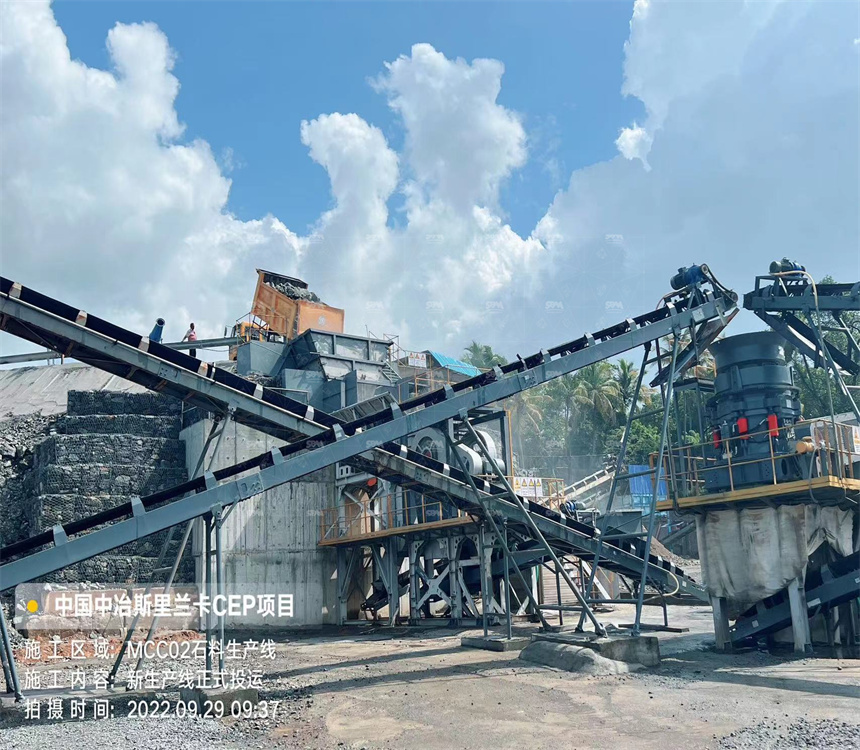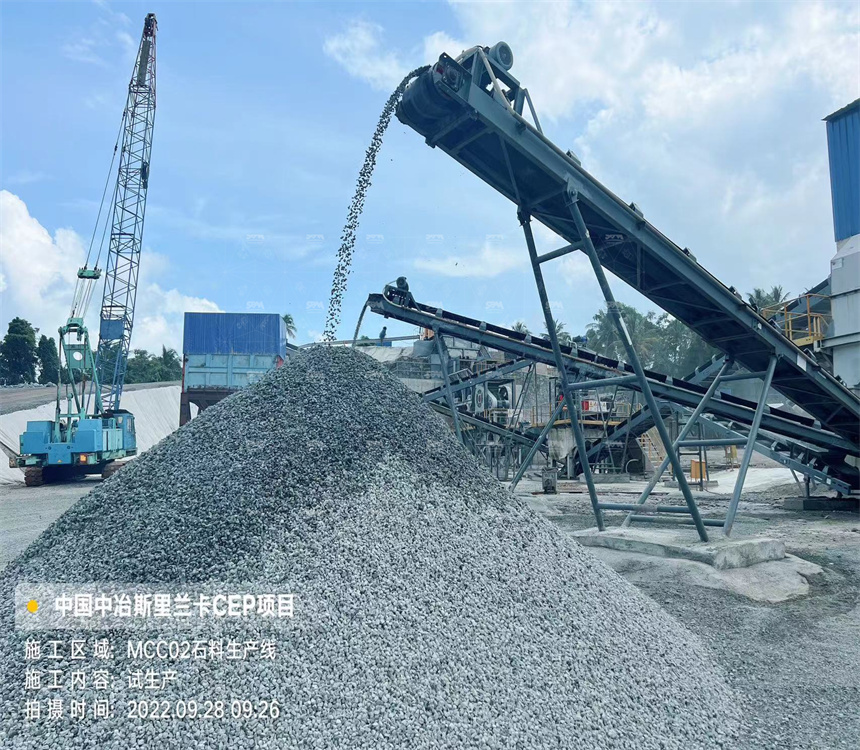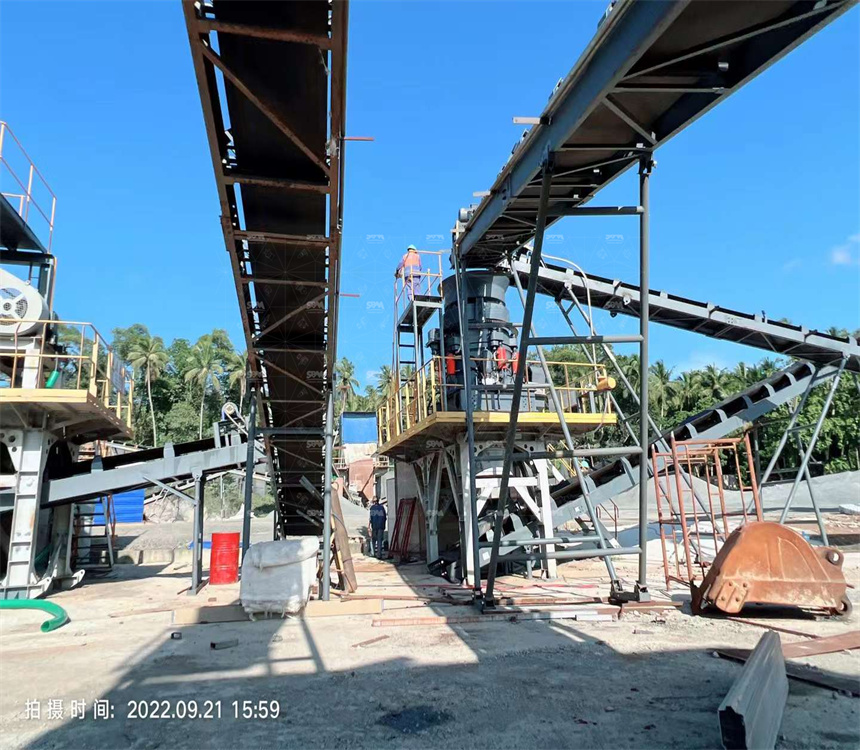Abstract: In this article we analyze in depth the selection, working principles, structural features, performance parameters, field data, case studies and best practices of crusher machines applied to limestone cement plants. Drawing on over 30 years of industry experience and real project data, we systematically present how to choose and operate crushing equipment (jaw crusher, impact crusher, cone crusher, sand making machine, screening & feeder systems). Our equipment data, capacity figures, process layouts are all referenced from verified manufacturer sources and real-world projects. This article offers actionable guidance, technical clarity and authoritative judgement for plant designers, procurement engineers and operations managers.

Limestone is the core raw material in cement plants: after quarrying it must be crushed to desirable sizes for further processing (kiln feed, raw meal, aggregate). The crushing stage is thus critical: reliability, energy consumption, product shape and maintenance directly influence downstream grinding energy, kiln stability, and product quality. Over the decades I have observed many plants struggle due to poor crusher selection, mismatched parameters, or lack of operational feedback loops.
2.1 Limestone nature and implications for crushing
Limestone is mainly composed of CaCO3, with Mohs hardness ≈ 3. Therefore it is relatively soft compared with hard rocks like granite or basalt. SBM states that limestone crushing generally adopts dry crushing without complex washing steps.
Despite its softness, limestone can have variations (interlayering, clay, abrasives), so abrasion resistance of liner materials still matters.
2.2 Desired output size ranges in cement plant and aggregate usage
In cement plants, crushed limestone is often fed into vertical mills or ball mills; the typical size is < 25 mm, often 0–10 mm. For aggregate use (road, concrete), desired fractions might include 0–5 mm, 5–10 mm, 10–20 mm, 20–31.5 mm. SBM’s 1000 tph limestone crushing project gives output sizes of 0–5, 10–20, 20–31.5 mm for railway & industrial use.
2.3 Feed size limits & reduction ratios
The feed size of raw limestone may reach 0–1000 mm in large quarries. In the 1500 tph plant case, SBM reports input up to 1000 mm and outputs in 0–5 mm, 5–10 mm, 10–20 mm and 20–31.5 mm ranges.
From a design standpoint, crusher reduction ratio (ratio of feed size to product size) should typically be ≤ 5–8 for primary crusher, and tighter ratios for secondary/tertiary stages. Exceeding a ratio of 8 can lead to over-stressing and high wear.
Thus the crusher lineup must be staged: primary jaw crusher → secondary crusher (cone or impact) → possibly tertiary shaping / sand-making. Each stage ensures manageable feed, desired gradation and reliable operation.
Here we explain the core types of crushers used in limestone crushing circuits, with their operating principles, key technical parameters, and pros/cons in cement plant usage.
The jaw crusher is the backbone of primary crushing. Among SBM’s product lines, the C6X Jaw Crusher is widely used in large-scale limestone crushing for cement and aggregates.
Working principle: The motor drives a belt and pulley to move the movable jaw up and down via an eccentric shaft. Limestone is crushed by compressive force between the fixed jaw plate and movable jaw plate. Crushed material falls when size is small enough. Adjustment of the discharge opening (closed-side setting, CSS) governs the product granularity.
Key parameters to consider:

Pros: simple structure, stable performance, easy maintenance. Cons: limited shape control, coarse granularity, cannot achieve very fine fractions by itself.
For medium or fine crushing and shaping in limestone circuits, impact crushers are used. SBM’s CI5X Impact Crusher is used in the 1000 tph limestone project, giving high efficiency and dual function of shaping + crushing.
Working principle: Material enters a chamber and is impacted by high-speed rotating blow bars, then rebounds onto impact plates or bars for secondary crushing. The repeated blow and impact action reduces size and can shape cubical product.
Key parameters:
Pros: Produces good shaping and cubical particles, integrates crushing + shaping. Cons: Wear cost in blow bars, sensitivity to feed gradation, less efficient in very hard rock (though limestone is relatively softer).
For secondary / tertiary crushing in limestone circuits, cone crushers are indispensable. SBM’s commonly used cones include HST Single Cylinder Hydraulic Cone, HPT / HPG / HPC** series. For instance, in the 1500 tph project and others, a combination of PE → HST → VSI6X is used.
Working principle: The motor drives the eccentric sleeve to rotate; the moving cone gyrates inside the fixed cone, and limestone is crushed by repeated compression, extrusion and shearing. The crushed particles exit through the discharge opening at the bottom.
Key parameters:
Pros: stable product size, high throughput, lower wear than impact in many cases, good for tertiary or secondary stages. Cons:
For final shaping, fine fraction, or creating manufactured sand (e.g. 0–5 mm), SBM’s VSI6X Sand Making Machine is deployed (in 1000 tph and quarries) because of stable operation and shaping + sand-making dual function.
Working principle: Material is fed into high-speed rotor; it is accelerated and thrown against the wear-resistant anvils or rock bed. Collision and centrifugal force cause further crushing and shaping. Some machines recirculate coarse fractions back for re-crushing.
Key parameters:
Pros: gives fine shape control, good cubical particles, low needle/fines ratio. Cons:
We propose a standard multi-stage crushing circuit, adapted to cement plant use, then discuss parameter tuning, energy consumption, maintenance and decision points.
4.1 Suggested circuit layout
A typical flow:

In high-capacity example: SBM’s 1000 tph limestone plant employs C6X Jaw, CI5X Impact (×2), VSI6X (×2). The 1500 tph plant uses PE + HST + VSI6X as main suite.
4.2 Sample parameter table (design reference)
| Stage | Typical Feed / Output Sizes (mm) | Capacity (tph) | Motor Power (kW) | Remarks |
|---|---|---|---|---|
| Jaw (C6X) | 0–1000 → 0–150 | 1000 | ~800–1000 | primary coarse crush |
| Impact (CI5X) | 0–150 → 0–50 or 5–20 | 1000 (×2) | ~500 ×2 | medium crushing + shaping |
| VSI6X | 0–50 → 0–5 / 5–10 mm | 1000 (×2) | ~400 ×2 | final shaping & manufactured sand |
4.3 Energy consumption & operational performance
From our field experience and reference to SBM projects: at full load, crushing energy consumption ranges 15–25 kW·h per ton (depending on crushing stage, recirculation). Typically the jaw stage uses lower specific energy (~3–8 kW·h/t), impact stage higher (~8–15 kW·h/t) and VSI shaping stage tends to be the highest in kW·h/t. Proper feed control, liner wear, and recirculation minimization are key to reducing energy.
4.4 Maintenance, downtime & faults
From actual user feedback: liner wear in jaw / cone crushers often replaced every 6–18 months depending on feed abrasiveness. Fault rates of < 2 % downtime per month is achievable in well-maintained plants. We saw a 1500 tph plant achieve over 98.5 % run ratio over annual operation. In a 1000 tph SBM project, the client reported stable operation in trial run and expressed satisfaction.
Regular lubrication, oil temperature control, liner inspection, and early monitoring (vibration, pressure) are crucial. Proper spare parts planning (blow bars, mantle, concave, rotor, bearings) reduces emergency stops.
Below I present three representative limestone crushing projects (with real parameters) where SBM machinery is deployed. These case studies reflect real engineering constraints and lessons gained from commissioning and operation.
Project summary: capacity 1000 t/h; raw material: limestone; outputs: 0–5, 10–20, 20–31.5 mm for railway & industrial aggregates. Equipment: C6X jaw crusher, CI5X impact crusher ×2, VSI6X ×2, supporting feeders and screens.
Key performance: This line adopted combined dry + wet processes (dry front-end crushing, wet back-end screening). A PLC-based centralized control and automatic loading system monitored dust, flow, and solids. The plant achieved very stable operation in trial run.
Challenges & solutions: During start-up, uneven feed (oversize blocks) led to impact crusher overload. The solution was to finetune screening partition and install better pre-screening. Also, blow bar wear was higher than expected: the team shifted to higher chromium alloys and slightly reduced rotor speed to lengthen service life.
Project summary: input up to 1000 mm, outputs: 0–5 mm, 5–10 mm, 10–20 mm, 20–31.5 mm. Major units: PE jaw crusher, HST hydraulic cone crusher, VSI6X sand maker, vibrating feeders & screens.
Outcomes: The finished product had excellent cubic shape. The plant was high-efficiency and reliable, with full project lifecycle service and a localized maintenance center. }
Lessons: Cone crusher chamber selection and hydraulic protection calibration were critical in reducing accidental stops. One plant refined the chamber change procedure and trained field technicians for real-time adjustment. Also, the sand maker recirculation ratio was controlled to < 25 % to limit energy penalty.
Project summary: a mobile limestone crushing plant built overseas using modular machines for flexible deployment. Although not full cement-grade plant, it showcases field adaptability and mobile crushing application.
Insights: The modular setup allowed quick relocation, and the control logic of “Crush Control” system (monitoring flow, feed, protection) improved consistency. This underlines that even cement plants may adopt semi-mobile modules for expansion phases.

Below is a simplified decision tree (in prose form) based on feed / product / site constraints I use in practice:
1. Feed size & hardness check: If feed has large blocks > 800 mm, a jaw crusher is mandatory as primary. For feed < 200 mm, you may consider skipping one stage, but risk overloading downstream.
2. Desired output fractions: If final target includes < 5 mm or manufactured sand, a VSI or shaping is needed. If only coarse aggregate, cone may suffice.
3. Required capacity: For > 500 tph, multi-unit parallel arrangement (e.g. two impacts, two VSIs) ensures load balance.
4. Energy & wear optimization: Choose equipment with lower specific energy when possible; avoid excessive recirculation.
5. Maintenance & spare availability: Favor models with easy access, hydraulic clearing, auto-lubrication, and local part support.
6. Intelligent control options: Adoption of systems like “Crush Control” gives real-time monitoring, auto adjusting and remote data access.
7. Layout & footprint constraints: In compact plants, vertical drop layouts or tight stacking may reduce civil cost.
8. Budget & total cost of ownership: Do not just pick lowest CAPEX; consider OPEX, downtime, spare parts over 10–20 years.
Using above logic, you filter options — e.g. choose C6X jaw, then choose between CI5X vs cone + VSI depending on output needs, then size per capacity, then auxiliary systems (feeders, screens, conveyors, dust control).
From my three decades’ field exposure, I confidently assert that a well-designed crusher suite is the backbone of a dependable limestone cement plant. The right match of jaw, impact, cone and VSI in multi-stage circuits, adjusted by real feedback loops, yields stable output, low cost and high plant availability.
Whatsapp:+8617329420102
Email: [email protected]
Address: No. 1688, Gaoke East Road, Pudong new district, Shanghai, China.
Online Service : Get Price
We value your feedback! Please complete the form below so that we can tailor our services to your specific needs.
